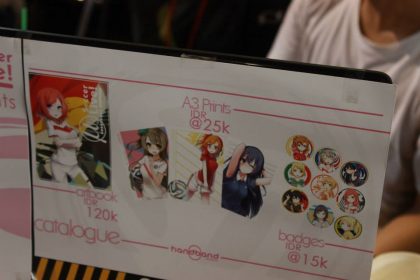At first glance, anime figures and statues might seem almost identical. Yet, a closer inspection reveals significant differences ranging from the materials used, overall dimensions, price points, to the intricacies of maintenance. As an avid collector, I’ve had the honor of delving deep into the quality and subtle complexities associated with owning both varieties.
For instance, while statues demand more attention and undoubtedly become the centerpieces of any collection display, anime figures generally come across as more budget-friendly and readily available.
Understanding the Financial Commitment: Price Matters
Stepping into the collector’s realm of anime figures and statues, you quickly encounter a stark financial contrast. Especially when importing collectibles from Japan or China, shipping expenses significantly influence the overall cost. Known for their lighter weight, anime figures usually cost less to ship, seldom exceeding around $40 for deliveries to destinations like the U.S. Yet, anime statues narrate a different financial tale.
Due to their heft and sometimes requiring multiple packages, shipping a statue can get quite pricey. Prospective collectors need to brace themselves financially, as shipping costs alone can add an additional $100-$500 to your budget. I’ve faced situations where shipping costs neared $500 due to the statue’s bulkiness and unconventional shape. These expenses often remain unpredictable, revealing themselves only when your item is ready for dispatch. Hence, having a financial cushion for unforeseen shipping charges, including carrier and import fees, proves wise.
Considering the Physical Aspects: Size and Weight
The physical traits of anime collectibles play a pivotal role in their handling and display. Anime figures, predominantly made from materials like ABS or PVC, are lightweight and manageable. Conversely, anime statues, crafted from denser substances like polystone or resin, are notably heavier, with some larger models weighing approximately 60 pounds. Their weight and expansive bases often call for a two-person effort during relocation.
The display requirements for these heavier collectibles are critical; they demand robust surfaces, ruling out glass or fragile materials. The choice of display location bears more weight for statues due to their size and weight.
Display Dynamics: Showcasing Your Collectibles
The display strategy for anime figures offers a good degree of versatility due to their relatively compact stature. It’s common to see them arranged against complementary backdrops, like manga collections, creating a visually appealing ensemble. Their size also allows for the accommodation of multiple figures within a single display unit, making them ideal for collectors who prefer a clustered presentation.
On the other hand, anime statues command attention. Their grandeur and intricate detailing make them standalone pieces within a collection. They demand not just space but a kind of stage of their own, often occupying prominent positions within a display area.
Craftsmanship and Composition: Quality and Materials
The distinction between anime figures and statues dives into the realm of their construction. Anime figures, primarily molded from PVC or ABS, limit the finesse of detailing possible due to the nature of these materials. However, this doesn’t detract from their quality, with companies like Hobby Max known for high-grade anime figures.
Statues, conversely, benefit from materials like polystone or resin, allowing for a higher degree of detail, texture, and lifelike portrayal. This superior craftsmanship justifies their premium status and higher price point.
The Assembly Experience
Unboxing anime figures and statues presents two contrasting experiences. Figures typically involve a simple process: removing them from the box and positioning them on their bases. Statues require more engagement, arriving in disassembled parts that you need to piece together, often guided by detailed instructions. This assembly can be an intricate process, adding another layer of interaction between collectors and their prized possessions.
A Spectrum of Scales: From Petite to Monumental
In the anime collectibles world, scale is a defining aspect that enthusiasts often consider. Anime figures typically feature a range of scales, with 1/7 and 1/8 being among the most prevalent. These scales are ideal for collectors who prefer consistency in size and wish to create a harmonious display. However, for those seeking something more substantial, figures also come in larger scales like 1/4 or even 1/2, though these are less common and considerably pricier.
Anime statues, known for their imposing presence, often start at 1/4 scale. These larger scales contribute to their striking detail and make them the centerpiece of any collection.
Exploring the Varieties: What’s on the Market
Collectors are spoilt for choice with the array of anime figures and statues on the market. From standard figures representing characters in their most iconic forms to variants depicting them in alternative outfits or scenarios, there’s something for every enthusiast. Special editions or limited releases are particularly sought after, often featuring unique poses, interchangeable parts, or detailed accessories.
Statues offer a different allure with their limited editions and exclusive releases. These collectibles can depict intricate scenes, dynamic battles, or iconic moments from the anime, rendered with stunning realism.
Behind the Scenes: The Creators of Your Favorites
Various manufacturers, known for their craftsmanship and dedication to authenticity, crowd the market. Companies like Good Smile Company, Kotobukiya, and Alter are renowned for producing high-quality anime figures.
In the realm of statues, studios such as Prime 1 Studio and Figurama Collectors have made their mark with breathtakingly detailed pieces. These statues are not just collectibles but artistic interpretations that pay homage to the source material.
Preserving Your Treasures: Care and Maintenance
Whether owning anime figures or statues, understanding and implementing proper care is paramount in maintaining your collectibles’ aesthetics and integrity. These items, while durable, are susceptible to environmental factors that could compromise their appearance over time.
For figures, regular dusting is recommended. Soft, clean brushes or microfiber cloths are ideal for this task, offering cleaning efficiency without the risk of abrasion.
Conclusion: Embarking on a Collector’s Journey
Embarking on the collector’s journey unfolds a realm of passion and dedication. It symbolizes a blend of art, culture, and adoration for cherished characters and narratives. While figures extend an affordable and diverse entry point, statues emerge as monumental embodiments enriching any collection. Both find a unique place in a collector’s heart.
Grasping the nuances, from making a purchase to ensuring apt maintenance, enriches the collector’s voyage. It paves the way for well-informed choices, aligning every addition with personal preferences and collection aspirations.
Whether drawn to the accessible allure of figures or the majestic charm of statues, every piece added narrates a fresh chapter in a collector’s unique narrative. This realm, brimming with endless discoveries, opens its arms to all, fostering a joyous kinship among enthusiasts worldwide.













